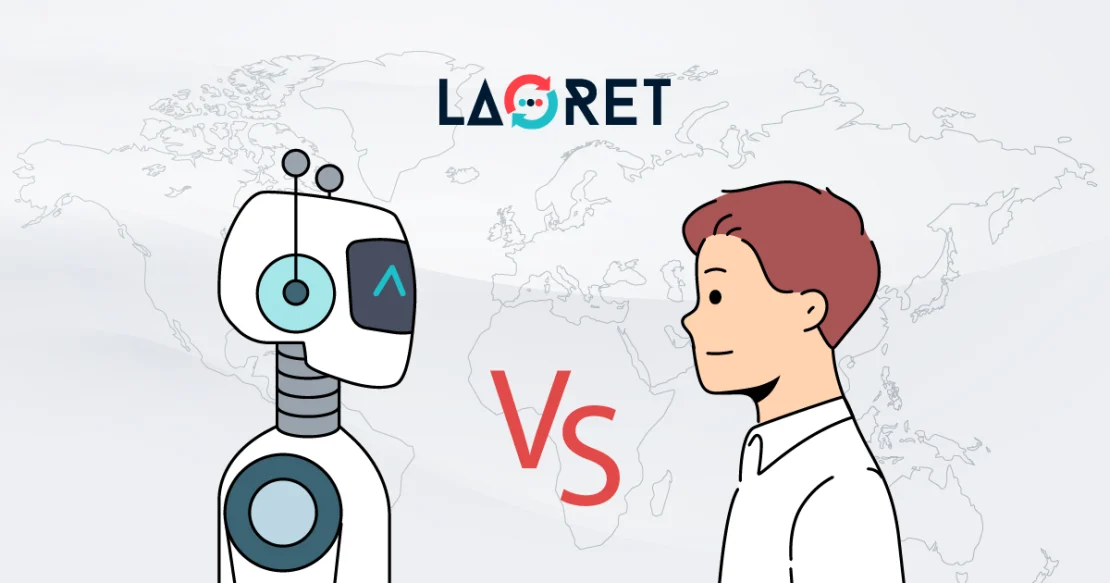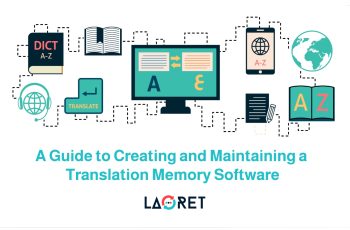Human vs Machine Translation: Which Is Right for Your Business?
The translation landscape has become increasingly complex as businesses race to reach international markets. But with AI involved in every industry comes the debate of which is more efficient human or machine translation.
But here’s the truth: the best choice isn’t always obvious, and the wrong decision could cost you more than just money.
This blog unpacks the key differences between human vs machine translation, weighs their pros and cons, and explores how to find the perfect balance for your business needs.
Human Translation: The Art of Linguistic and Cultural Adaptation:
Starting the debate of machine vs human translation, let’s define the regular standard human translation.
Human translation is a meticulous process where a professional translator analyzes the original text and translates it into the target language. This isn’t just about swapping words, professional translators work to capture the meaning, tone, and intent of the source material.
They consider idioms, cultural references, and subtle nuances of both languages to ensure that the final content resonates with the target audience while maintaining the authenticity of the original message.
We can sum up the process as follows:
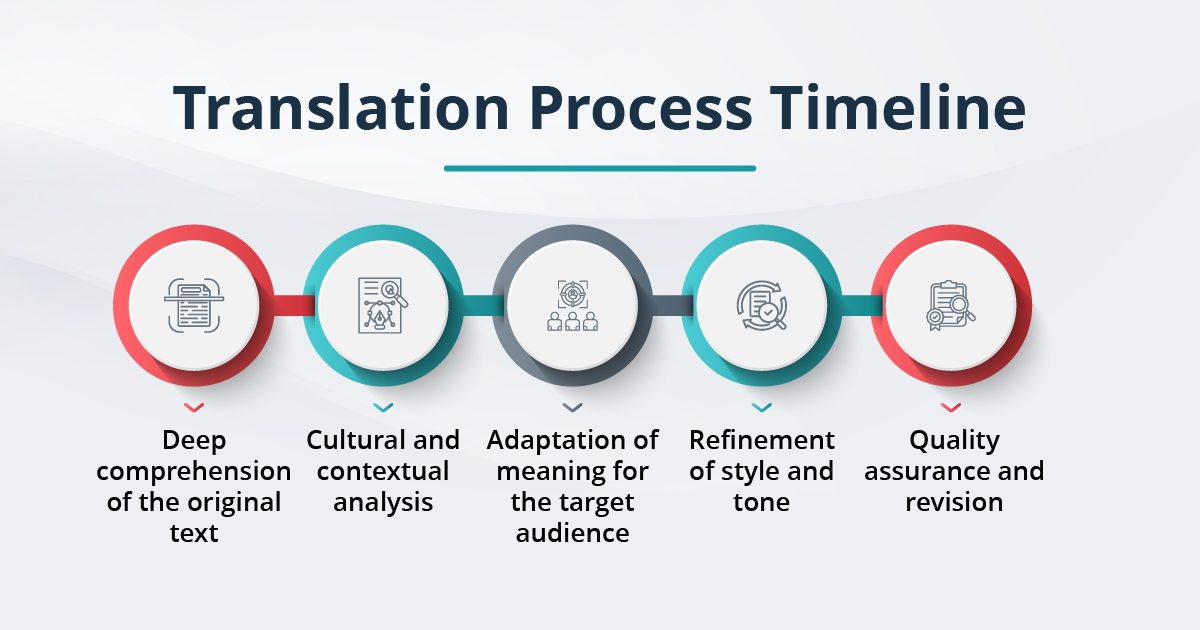
The Main Benefit of Human Translation
Cultural understanding is at the heart of effective translation. Human translators possess a deep knowledge of cultural nuances, allowing them to adapt content for the target audience in a way that feels natural and relevant.
They can identify and avoid cultural missteps, ensuring that your message is accurate and culturally appr opriate. This expertise is essential for building trust and fostering meaningful connections with diverse audiences across languages and regions.
By combining linguistic accuracy with cultural sensitivity, human translation delivers a level of quality and resonance that automation alone cannot achieve.
Well, what does machine translation vs human translation offer on the other hand?
Machine Translation: The Power of Automation and AI
Machine translation harnesses artificial intelligence and neural machine translation (NMT) to convert text between languages automatically. Unlike basic translation tools like early Google Translate, modern AI systems analyze context and patterns across millions of texts to generate more natural translations.
Machine translation has evolved from simple word-by-word substitution to sophisticated neural networks that understand context and nuance. Today’s NMT systems learn continuously from new data, steadily improving their accuracy and fluency.
Machine translation Pros and Cons
Pros: The Advantages:
- Translates massive volumes instantly
- Significantly reduces costs
- Available 24/7
- Consistent terminology usage
Cons: The Limitations:
- May miss cultural subtleties
- Struggles with creative content
- Can produce awkward phrasing
- Requires human review for accuracy
- Limited understanding of the context
- Not suitable for complex or highly specialized content
The choice between human vs machine translation ultimately comes down to your priorities: human translators excel at delivering culturally nuanced, high-quality content that resonates with your audience, while machine translation offers speed, consistency, and cost-effectiveness for large-scale projects.
The key is knowing when to use each approach, or combine them, to achieve your global communication goals. To make the choice clearer and effective we have built down a detailed comparison for human vs machine translation.
Human vs Machine Translation: A Detailed Comparison:
| Feature | Human Translation | Machine Translation |
| Accuracy | Nuanced, accurate, and natural-sounding output that maintains tone and style | Variable accuracy
Can sound mechanical (depending on language pair and text type)
May need human review |
| Speed & Volume | Slower processing
Limited by human capacity |
Instant translation
Handles large volumes 24/7 |
| Cost | Higher cost per word
Project-based pricing |
Lower cost per word
Subscription options available |
| Cultural Sensitivity | Excellent cultural understanding
Adapts idioms naturally Preserves emotional impact |
Limited cultural awareness
May in some cases produce literal translations
Misses contextual nuances |
| Best For | Marketing content
Creative materials Legal documents Technical and specialized content Brand Messaging Cultural adaptation |
Internal communication
Generic, Non-specialized content
High-volume projects
Time-sensitive materials |
| Consistency | High with proper quality control | High in terms of wording because of the translation memory, but not necessarily in terms of accuracy |
| Complexity Handling | Handles complex linguistic structures, idioms, and specialized content with expertise | Manages basic to moderate complexity, but struggles with intricate language patterns |
Combining Human and Machine Translation: The Best of Both Worlds
A smart solution for translation lies in combining the strengths of human and machine translation. This hybrid method, known as Machine Translation Post Editing, uses machine translation to create a baseline draft, which is then reviewed and refined by a professional human translator. This ensures accuracy, fluency, and cultural appropriateness while leveraging the speed and efficiency of AI.
This method saves time and resources, particularly for:
- Large-volume content like user manuals and internal communications
- Marketing materials needing creative adaptation
- Time-sensitive projects requiring quick turnaround
- Multi-language projects needing consistent translations
For example, when Netflix needs to translate content for multiple markets, they use machine translation for initial drafts of subtitles, and then expert linguists refine the text to capture cultural references and humor appropriately.
This proves that machines will not replace human translators, but when combining automation with professional human translation, businesses can achieve faster, high-quality results while maintaining cultural relevance and understanding.
Read more about software translation services to see how this approach can transform your global communication strategy.
Now, let’s move to help you choose the right translation methods, what should you consider?
Choosing the Right Translation Method: Factors to Consider
When selecting the most suitable translation method for your project, consider the following factors:
-
Text Type:
Is the content technical, creative, marketing-oriented, or general? Creative content often requires human expertise to capture nuances, tone, and cultural relevance. Similarly, technical and highly specialized content demands expert knowledge to ensure accuracy, precision, and compliance with industry-specific terminology.
-
Complexity:
Does the content involve complex terminology, cultural nuances, or intricate sentence structures? Human translators excel at handling these complexities.
-
Purpose:
Is the translation intended for internal use, publication, or customer-facing materials? High-visibility content may require a human touch for accuracy and cultural adaptation.
-
Target Audience:
Who will be reading the translated content? Different target languages and demographics may demand localized, culturally relevant translations.
-
Budget:
What resources are available? Machine translation can be more cost-effective for large volumes of text, while human translation typically requires higher investment.
-
Turnaround Time:
How quickly do you need the translation? Machine translation offers speed for tight deadlines, but human translation ensures quality for critical projects.
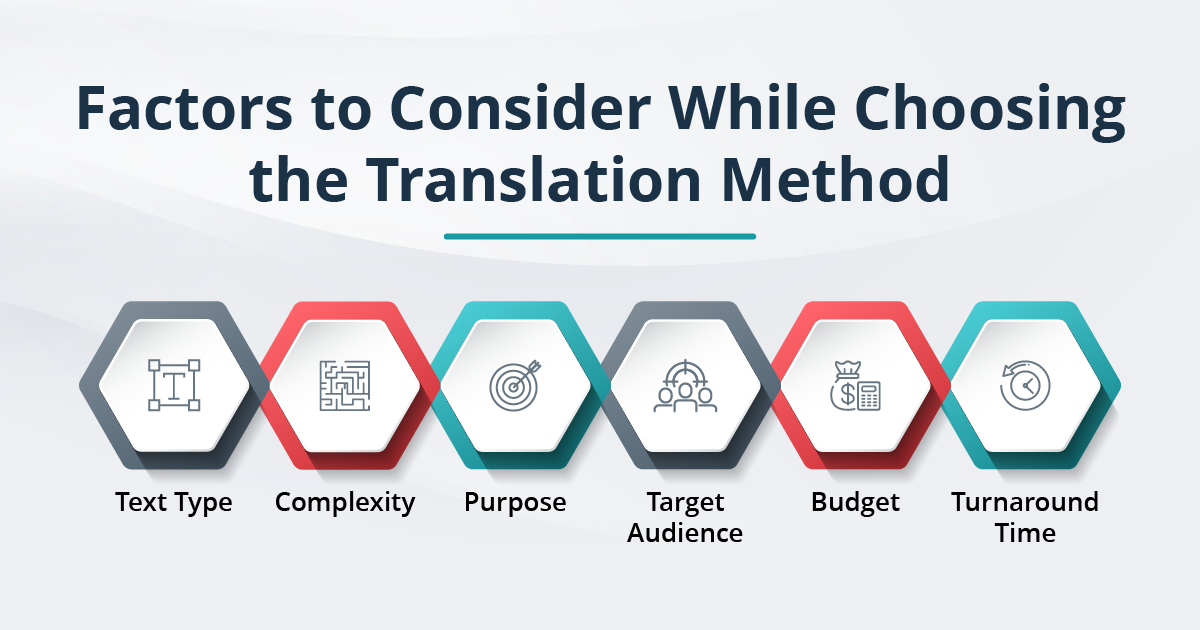
Each translation project is unique, and choosing the right approach can be challenging. To ensure the best results, businesses should consult with language service providers.
These experts can evaluate your specific needs and recommend the optimal translation method, whether it’s human, machine, or a hybrid approach for your target languages, content type, and objectives.
The Value of Professional Translation and Localization Services:
Professional translation isn’t just about converting words—it’s about understanding cultural nuances and adapting content to resonate with local audiences. Qualified language professionals possess expertise in both the source and target languages and cultures, ensuring your message maintains its meaning and impact across borders.
Quality assurance plays a vital role in professional translation. Rigorous review processes and advanced tools ensure accuracy, consistency, and cultural sensitivity, helping businesses avoid costly errors or cultural misunderstandings.
Delivering culturally adapted, high-quality content, professional translation, and localization services helps businesses build trust and credibility with international audiences. When your communication feels natural and authentic, it fosters stronger connections and enhances your brand’s global reputation.
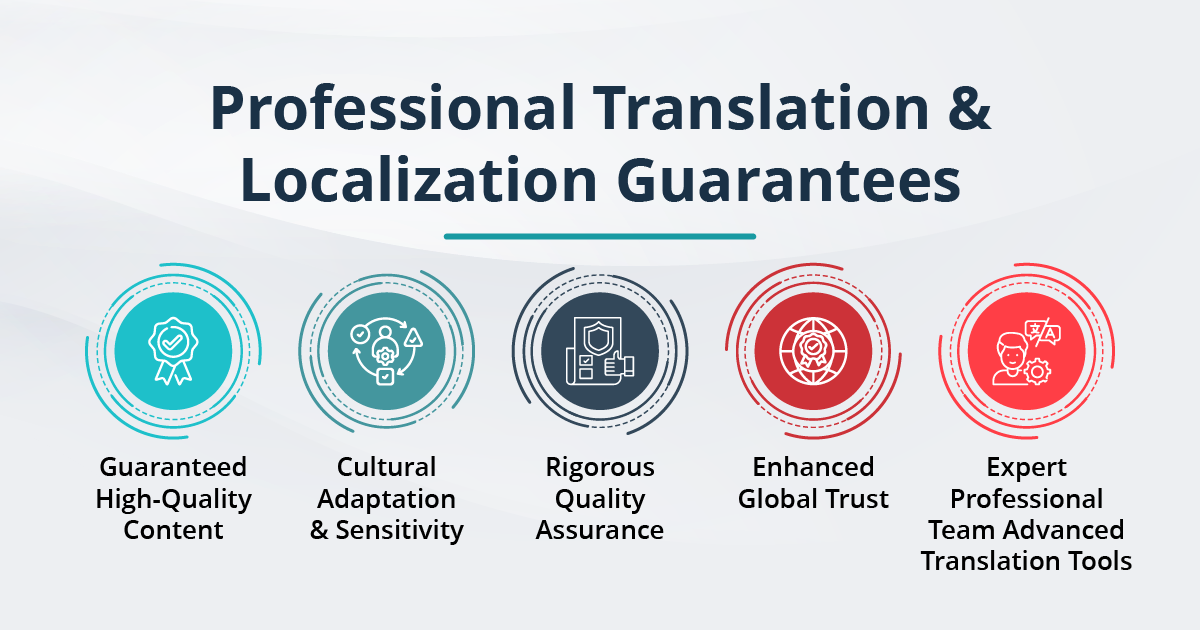
Laoret: Your Global Translation and Localization Partner
At Laoret, we blend the power of AI automation with the expertise of professional human translators to deliver fast, accurate, and culturally relevant translations in over 120 languages.
Our ISO-certified workflows ensure the highest standards of quality and consistency, whether you need website localization, marketing transcreation, or technical translation. You can trust us to bridge language gaps while respecting cultural differences.
Contact us today to explore how we can support your translation and localization needs.

